
Related Products & Systems on Other Pages on This Website
GAO RFID Heavy Duty Machinery Asset Management System
GAO RFID Commercial Construction Asset Management System
Water & Wastewater Construction RFID Solutions
Construction Site Access Control System
Overview
Other heavy and civil engineering construction involves constructing highways, bridges, tunnels, airports, railways, dams, and other infrastructure projects. It plays a vital role in developing and maintaining essential transportation, water supply, energy distribution, and public service infrastructure. The industry encompasses activities like earthmoving, grading, paving, site preparation, and utility system installation. With its specialized expertise and equipment, it supports economic growth and improves regional quality of life.
GAO’s RFID, BLE, IoT, and drone technologies have helped its customers in other heavy and civil engineering construction to improve their work processes, their operations, and productivity through better management of their staff, materials, and operational equipment such as bulldozers, loaders, cranes, dump trucks, pavers, graders, compactors, backhoes, trenchers, rollers, concrete mixers, asphalt plants, pile drivers, drilling rigs, aerial lifts, scaffolding, and surveying equipment.
Ranked as a top 10 global RFID supplier and based in New York City and Toronto, GAO RFID Inc. offers a wide choice of RFID (radio frequency identification) readers and tags at an ultra-high frequency (UHF), high frequency (HF, including NFC) and low frequency (LF), BLE (Low Energy Bluetooth) gateways and beacons, and various RFID and BLE systems such as people tracking, asset tracking, access control, parking control, fleet management, WIP (work in progress), traceability. Such RFID and BLE products and systems, together with its IoT and drone technologies, have been widely used in other heavy and civil engineering construction.
Applications & Benefits of GAO’s RFID, BLE, IoT & Drones for Other Heavy and Civil Engineering Construction
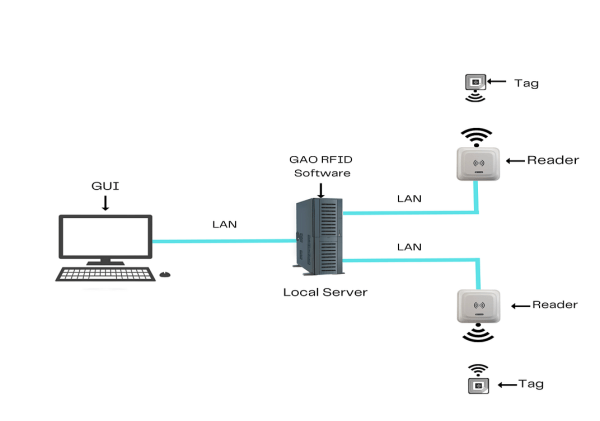
To satisfy its customers, GAO’s RFID or RFID Systems for the other heavy and civil engineering construction are offered in 2 versions. One version is that its software is running on a local server that normally is on our client’s premise, and another version runs in the cloud. The cloud server could be GAO’s cloud server, client’s own cloud server or a cloud server from one of the leading cloud server providers such as Amazon Web Services (AWS), Microsoft Azure, Google Cloud, IBM Cloud (formerly SoftLayer), Oracle Cloud, RedHat, Heroku, Digital Ocean, CloudFlare, Linode and Rackspace. The above illustrates GAO system for other heavy and civil engineering construction with its software running on a local server.

The above illustrates the GAO system for other heavy and civil engineering construction with its software running in the cloud.
GAO’s RFID and BLE technologies, consisting of RFID readers, RFID tags, BLE gateways, BLE beacons, software, cloud services and their systems, have the following applications to other heavy and civil engineering construction industry:
- Efficient Equipment Utilization and Maintenance: Our RFID facilitates equipment tracking, usage monitoring, and maintenance scheduling, minimizing downtime and optimizing resource utilization.
- Accurate Data Collection and Analysis: Our RFID-enabled data collection ensures accurate and reliable information for project analysis, enabling informed decision-making, resource optimization, and performance evaluation.
- Accurate Project Documentation: GAO’s RFID simplifies data collection for documentation purposes, ensuring accurate records of materials used, work progress, and compliance documentation.
- Enhanced Quality Control: Our RFID enables real-time monitoring of construction processes, ensuring adherence to quality standards and enabling prompt corrective actions.
- Enhanced Site Planning and Layout: GAO’s BLE-based indoor positioning systems can assist in site planning and layout optimization, ensuring efficient use of available space.
- Smart Tool Management: GAO’s BLE tags can be attached to tools, such as pavers, jackhammers, and concrete saws allowing easy tracking and management, reducing tool loss, and enhancing productivity.
- Streamlined Inspections and Audits: Our BLE technology simplifies inspections and audits by automating data collection, ensuring compliance, and reducing manual effort.
- Advanced Analytics and Insights: GAO’s BLE-generated data can be analyzed to gain insights into operational patterns, enabling continuous improvement and informed decision-making.
GAO’s drone technologies find the following applications to other heavy and civil engineering construction industry:
- Efficient Material Delivery: Drones equipped with GAO’s RFID tags can enable automated and accurate material delivery to specific construction locations, reducing manual handling and improving logistics efficiency.
- Optimized Surveying and Mapping: Drones combined with GAO’s RFID technology can conduct aerial surveys and create high-resolution maps, improving surveying accuracy and data integration.
- Advanced Safety Training and Simulations: Drones combined with GAO’s RFID data, can be utilized for safety training simulations, improving worker preparedness, and reducing accidents.
- Efficient Site Analysis and Planning: Drones equipped with Our RFID and high-resolution cameras can capture data for site analysis, allowing construction companies to optimize site layout, plan logistics, and minimize construction conflicts.
GAO’s IoT technologies, consisting of IoT sensors, sensors networks and systems, find the following applications to other heavy and civil engineering construction industry:
- Precise Geolocation and Asset Tracking: GAO’s IoT devices with GPS capabilities can accurately track the location of construction assets, tools, and vehicles, reducing loss, theft, and improving inventory management.
- Data-driven Decision Making: GAO’s IoT-generated data can be analyzed using advanced analytics and machine learning algorithms, providing valuable insights for informed decision-making, process optimization, and continuous improvement.
- Seamless Integration with Project Management Systems: Our IoT systems can integrate with project management platforms, enabling automatic data synchronization, streamlined workflows, and efficient project coordination.
- Improved Environmental Sustainability: GAO’s IoT technology can monitor and optimize energy consumption, water usage, and waste management, contributing to reduced environmental impact and promoting sustainable construction practices.
GAOs Assists Clients with Standards, Mandates & Regulations of Other Heavy and Civil Engineering Construction
GAO RFID Inc. has developed its products and systems in compliance with industry standards and mandates. GAO has assisted our customers in other heavy and civil engineering construction to deploy RFID, BLE, IoT, and drone systems and to ensure such deployments comply with applicable industry standards, U.S. government regulations, and Canadian government regulations such as:
RFID, BLE, IoT, & Drone Standards & Mandates
RFID Standards related to other heavy and civil engineering construction:
- ISO 18000-5
- ISO 18000-6C
- ISO 15693
- ISO 14443
- Bluetooth 4.0
- Bluetooth 4.1
- Bluetooth 4.2
- Bluetooth 5.0
- Bluetooth 5.1
- Bluetooth 5.2
- MQTT (Message Queuing Telemetry Transport)
- CoAP (Constrained Application Protocol)
- OPC UA (Open Platform Communications Unified Architecture)
- LWM2M (Lightweight M2M)
- Thread
- LoRaWAN
- ASTM F3266
- ASTM F2910
- ASTM F3322
The US. Government Regulations
- Occupational Safety and Health Administration Regulations
- Federal Highway Administration Regulations
- Environmental Protection Agency Regulations
- National Environmental Policy Act
- Army Corps of Engineers Regulations
Canadian Government Regulations
- Canadian Construction Association Documents
- Canadian Standards Association
- Canadian Transportation Agency Regulations
- National Energy Board Regulations
- Natural Resources Canada Regulations
GAO Software Provides API
GAO’s RFID and BLE software offers a free trial for both the server-based and cloud versions and offers an API to the important systems in other heavy and civil engineering construction such as:
Personnel Management:
- Tracking and managing construction workers’ attendance and work hours.
- Managing employee certifications, training, and qualifications.
- Scheduling and assigning tasks to construction workers.
- Tracking employee performance and productivity.
- Managing payroll and employee benefits.
Equipment Management:
- Tracking and managing construction equipment inventory.
- Scheduling and coordinating equipment maintenance and repairs.
- Monitoring equipment usage and performance.
- Optimizing equipment utilization and minimizing downtime.
- Tracking equipment location and movement on construction sites.
Access Control:
- Controlling access to construction sites for authorized personnel.
- Monitoring and recording entry and exit of workers and visitors.
- Implementing biometric or RFID-based access control systems.
- Enhancing security and preventing unauthorized access.
- Managing access permissions for different areas within construction sites.
Warehouse Management:
- Managing inventory of construction materials and supplies.
- Tracking stock levels and initiating reorder processes.
- Optimizing storage space and layout within warehouses.
- Streamlining receiving, picking, and shipping processes.
- Implementing barcode or RFID-based inventory tracking systems.
Supply Chain Management:
- Managing relationships with suppliers and subcontractors.
- Optimizing procurement processes for construction materials and services.
- Tracking and monitoring the delivery of materials to construction sites.
- Managing vendor contracts and ensuring timely payments.
- Implementing supply chain analytics for cost optimization and risk management.
Other Applications:
- Safety management and monitoring on construction sites.
- Quality control inspections and tracking.
- Project scheduling and management.
- Document management and collaboration.
- Environmental sustainability and green building initiatives.
GAO has enabled its customers to make use of some of leading software and cloud services in the other heavy and civil engineering construction industry. Below are some of popular software and cloud services in the other heavy and civil engineering construction industry. Such as: Procore, PlanGrid, Trimble CrewSight, Aconex, ConstructSecure, e-Builder, QuickBooks Online, Corecon, Autodesk AutoCAD, SketchUp Pro, Bluebeam Revu.
GAO has worked with some of the leading technology companies in other heavy and civil engineering construction to provide integrated RFID, BLE, IoT, and drone solutions to customers. Here are some of the technology leaders in other heavy and civil engineering construction: Oracle Corporation, Bentley Systems, Incorporated, Procore Technologies, Incorporated, Siemens AG, Schneider Electric SE, Honeywell International Incorporated, Johnson Controls International plc, ABB Ltd, Cisco Systems, Incorporated, Hilti Corporation, Komatsu Ltd, Caterpillar Incorporated.
Case Studies of RFID Applications
Below are some RFID application cases in other heavy and civil engineering construction.
Turner Construction Company implemented a UHF RFID solution to optimize asset management in a large-scale civil engineering project. By attaching UHF RFID tags to construction equipment and materials, Turner Construction gained real-time visibility into their location and status, streamlining inventory tracking and reducing tool loss. The RFID system improved resource utilization, resulting in significant cost savings and increased productivity. Accurate and timely data provided by the RFID technology enhanced project planning and scheduling, minimizing equipment downtime and improving overall project efficiency. Turner Construction successfully completed the project within the designated timeline.
PCL Construction leveraged RFID technology to enhance access control and attendance management on a civil engineering project. RFID badges were issued to workers, enabling automated tracking of worker entry and exit. The RFID system improved site security by ensuring authorized access and providing accurate attendance records. PCL Construction achieved enhanced safety and workforce management through real-time monitoring of worker presence. The automated attendance tracking reduced manual record-keeping efforts and improved project accountability, contributing to a safer and more efficient construction environment.
Skanska USA utilized UHF RFID technology for worker safety and compliance on a high-profile construction project. UHF RFID tags were integrated into workers’ personal protective equipment (PPE), ensuring that employees had up-to-date and properly maintained safety gear. The RFID system enabled real-time monitoring of PPE usage, maintenance schedules, and compliance records, enhancing worker safety and regulatory compliance. With comprehensive data on PPE inventory and usage patterns, Skanska USA effectively managed PPE supply, minimized safety risks, and maintained a safe working environment. The implementation of RFID technology contributed to reduced incidents and improved worker well-being.
Aecon Group adopted RFID technology to optimize supply chain management in a civil engineering construction project. RFID tags were applied to construction materials, enabling real-time tracking and monitoring throughout the supply chain. The RFID system enhanced logistics planning minimized inventory errors, and reduced project delays. The Aecon Group gained improved visibility into material availability, enabling better coordination with suppliers and ensuring timely deliveries. By implementing RFID technology, Aecon Group achieved streamlined supply chain operations, increased project transparency, and improved overall construction efficiency. The accurate tracking of construction materials resulted in cost savings and improved project timelines.
EllisDon Corporation utilized UHF RFID technology to enhance material management on a major infrastructure project. By deploying UHF RFID tags and readers, EllisDon achieved accurate and efficient tracking of construction materials across multiple work sites. The RFID system automated inventory control processes minimized manual data entry errors, and improved supply chain visibility. Real-time data capture and analysis provided by the RFID technology facilitated improved project coordination, reduced material waste, and enhanced overall project efficiency. EllisDon experienced cost savings and increased client satisfaction through streamlined material management and improved project timelines.
Clark Construction Group implemented UHF RFID technology to optimize tool management and tracking in a large-scale civil engineering project. By attaching UHF RFID tags to tools and equipment, Clark Construction gained real-time visibility into their location and usage. The RFID system streamlined tool inventory management, reducing losses and minimizing the time spent searching for tools. Using handheld RFID readers, workers were able to quickly locate and retrieve the required tools, enhancing productivity on the construction site. The accurate and automated tracking of tools improved resource allocation and reduced project delays. Clark Construction successfully completed the project within the designated timeline, thanks to the efficient tool management facilitated by UHF RFID technology.
Many applications of RFID by GAO can be found here.
Case Studies of IoT Applications
Below are some IoT application cases in Other Heavy and Civil Engineering Construction industry.
Smart Building Solutions: IoT sensors integrated into various systems in a construction project for a commercial building allowed real-time monitoring and optimization of energy usage, occupancy patterns, and indoor environmental conditions, leading to improved energy efficiency and occupant comfort.
Intelligent Traffic Management: An infrastructure construction project in a major urban area used IoT sensors and data analytics to create an intelligent traffic management system. The IoT-enabled system monitored traffic flow, congestion, and patterns in real-time, optimizing traffic signal timings and enhancing transportation efficiency.
Remote Monitoring of Construction Sites: In a construction project for a remote infrastructure site, IoT sensors were deployed to monitor parameters such as temperature, humidity, and structural stability. Real-time data transmission to project managers enabled remote site monitoring and timely decision-making on resource allocation and risk management.
Smart Grid Implementation: A utility infrastructure project incorporated IoT technology to create a smart grid system. IoT sensors installed on power lines and distribution equipment facilitated real-time monitoring of electricity usage, identifying faults and outages more efficiently, leading to improved grid reliability and load balancing.
Case Studies of Drone Applications
Below are some Drone application cases in Other Heavy and Civil Engineering Construction industry.
Aerial Surveying and Mapping: In a heavy construction project for a new highway development, drones were employed to conduct aerial surveys and create detailed topographic maps of the terrain. The drones captured high-resolution images and collected data that helped the engineering team to plan the road’s alignment, assess potential obstacles, and optimize the construction process.
Construction Site Monitoring and Progress Tracking: Drones were utilized in a civil engineering project for a large infrastructure development to monitor the construction site regularly. By capturing aerial footage and images at various stages of the project, the project managers could track progress, identify bottlenecks, and ensure that construction activities adhered to the project schedule.
Bridge and Dam Inspections: In a heavy construction project involving a major bridge and dam overhaul, drones were deployed to conduct inspections of difficult-to-reach areas. The drones’ ability to access remote or hazardous locations allowed engineers to assess structural integrity, identify potential maintenance needs, and ensure the safety of workers during inspection tasks.
Environmental Monitoring and Compliance: Drones were utilized in a civil engineering project for an environmental restoration initiative. Equipped with specialized sensors, the drones monitored air and water quality, wildlife habitats, and vegetation growth. The data collected aided in assessing the project’s environmental impact and ensuring compliance with regulatory requirements.
Safety and Security Surveillance: In a heavy construction project with a large work site, drones were employed for safety and security surveillance. The drones conducted regular patrols, monitoring for potential hazards, unauthorized access, and safety violations. This proactive approach to surveillance contributed to maintaining a safe working environment for construction personnel.
Material Transport and Logistics: Drones were used in a civil engineering project to transport small, high-priority materials and equipment between construction sites within a large industrial complex. The drones’ agility and speed reduced transport time and contributed to streamlining logistics operations.
Communication and Stakeholder Engagement: In a heavy construction project involving public infrastructure, drones were used to capture aerial footage and images for communication and stakeholder engagement purposes. The visuals helped communicate project updates, milestones, and future plans to the public, local authorities, and other stakeholders.
Emergency Response and Disaster Assessment: Drones played a crucial role in a civil engineering project focused on disaster response and recovery. After a natural disaster, drones were deployed to rapidly assess infrastructure damage, identify critical areas for relief efforts, and provide situational awareness to emergency response teams.
GAO RFID Systems & Hardware for Other Heavy and Civil Engineering Construction
GAO RFID Inc. offers the largest selection of BLE gateways, BLE beacons, RFID readers, tags, antennae, printers, and integrated RFID systems for various industries, including other heavy and civil engineering construction.
BLE (Bluetooth Low Energy)
GAO offers advanced BLE gateways:
as well as versatile beacons with such important functions as temperature, humidity, vibration, and panic button:
GAO’s BLE technology is suitable for many industries, including other heavy and civil engineering construction.
UHF (Ultra High Frequency) RFID
GAO offers the largest selection of UHF RFID readers for various industries, including other heavy and civil engineering construction:
GAO RFID offers the widest choice of UHF RFID tags, labels, badges, and wristbands for various industries, including other heavy and civil engineering construction:
and an array of antennas to address different applications:
HF (High Frequency), NFC (Near Field Communications), and LF (Low Frequency) RFID
GAO offers the largest selection of HF, NFC, and LF RFID readers for various industries, including other heavy and civil engineering construction:
HF, NFC, and LF RFID tags, labels, badges, and wristbands for various industries, including other heavy and civil engineering construction:
and antennas:
GAO also offers RFID printers:
Digital I/O adapters:
and relay controllers:
For embedded applications, GAO offers UHF, HF, and LF RFID reader modules:
The RFID systems by GAO are highly popular for clients in other heavy and civil engineering construction:
Physical asset or operational equipment tracking system:
Assets that can be effectively tracked using GAO’s technologies include.
- Excavators: Heavy machinery used for digging trenches, excavating soil, and moving large quantities of earth.
- Cranes: Tall and powerful machines used for lifting and moving heavy objects and materials at construction sites.
- Pile Drivers: Equipment used for driving piles into the ground to provide structural support for foundations or retaining walls.
- Concrete Pumps: Specialized machinery used for pumping and pouring liquid concrete into formwork during construction.
- Trenchers: Equipment designed for digging trenches quickly and efficiently, commonly used for laying underground utilities.
- Pavers: Machines used for laying asphalt or concrete on roads, parking lots, and other paved surfaces.
- Compactors: Heavy machinery used for compacting soil, gravel, or asphalt to create a stable base for construction projects.
- Tunnel Boring Machines (TBMs): Large machines used for excavating tunnels by boring through soil and rock.
- Surveying Equipment: Tools such as total stations, GPS systems, and laser scanners used for precise measurement and mapping of construction sites.
People or workers tracking system:
Personnel or people access control system:
Parking or vehicle control system:
GAO Has Served Other Heavy and Civil Engineering Construction Extensively
GAO’s products and technologies have helped its customers in other heavy and civil engineering construction to achieve success in 3D printing in construction, smart cities, energy-efficient construction, circular economy, big data analytics, drone technology in construction, wearable technology and safety devices, cloud-based collaboration and project management, lean construction practices, resilient infrastructure, integrated project delivery (IPD).
GAO RFID Inc. has served many customers in other heavy and civil engineering construction, including its various divisions such as:
- Road and Highway Construction: Involves the construction and maintenance of roads, highways, and transportation infrastructure.
- Bridge and Tunnel Construction: Focuses on the construction and repair of bridges, tunnels, and other transportation structures.
- Railway and Track Construction: Deals with the construction and maintenance of railway tracks, stations, and associated infrastructure.
- Airport Construction: Involves the construction and expansion of airports, runways, terminals, and related facilities.
- Port and Harbor Construction: Focuses on the construction and development of ports, harbors, docks, and marine infrastructure.
- Water and Sewer Line Construction: Involves the installation and maintenance of water supply, sewerage, and drainage systems.
- Power and Energy Infrastructure Construction: Deals with the construction of power plants, substations, transmission lines, and renewable energy projects.
- Dam and Water Resource Construction: Focuses on the construction of dams, reservoirs, water treatment plants, and irrigation systems.
- Land Development and Site Preparation: Involves the preparation of land for construction projects, including excavation, grading, and site infrastructure.
- Environmental Remediation and Restoration: Deals with the cleanup and restoration of contaminated sites, including soil and groundwater remediation.
Here are some of the leading companies in other heavy and civil engineering construction:
- Bechtel Corporation: A global engineering, construction, and project management company involved in various infrastructure projects, including roads, bridges, tunnels, airports, and more.
- Turner Construction Company: One of the largest construction management firms in the United States, offering services such as pre-construction planning, general contracting, and project management.
- Skanska USA: A leading construction and development company operating in various markets, including infrastructure, commercial buildings, and industrial projects.
- AECOM: A multinational engineering firm with expertise in infrastructure design, construction, and management, involved in projects across transportation, water, energy, and other sectors.
- Jacobs Engineering Group: A global engineering and construction company involved in infrastructure projects such as transportation, water, and environmental initiatives.
- Kiewit Corporation: A major construction and engineering company with diverse operations, including infrastructure construction, mining, and energy projects.
- Granite Construction Incorporated: A heavy civil construction company specializing in infrastructure projects, including highways, bridges, airports, and mass transit systems.
- Flatiron Construction Corp: A subsidiary of Hochtief AG, focusing on complex transportation and infrastructure projects.
- PCL Construction Enterprises, Inc.: One of the largest general contracting construction firms in North America, with a strong presence in infrastructure construction.
- Webcor Builders: A California-based construction company involved in various infrastructure and building projects.
- Aecon Group Inc.: One of Canada’s largest construction companies, involved in various infrastructure projects, including transportation, energy, and social infrastructure.
- SNC-Lavalin Group Inc.: A global engineering and construction company providing services in infrastructure, energy, and resources sectors.
- PCL Constructors Inc.: A major construction company in Canada, engaged in a wide range of projects, including infrastructure, commercial buildings, and industrial facilities.
- WSP Global Inc.: A professional services firm with expertise in engineering, design, and construction management for infrastructure projects.
- Graham Construction and Engineering LP: A Canadian construction company specializing in infrastructure projects, including transportation, water, and public facilities.

Bechtel Corporation

Fluor Corporation

Turner Construction Company
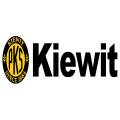
Kiewit Corporation

Skanska USA Incorporated

Granite Construction Incorporated
 Jacobs Engineering Group Incorporated
Jacobs Engineering Group Incorporated
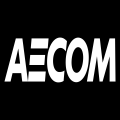
AECOM Technology Corporation

McCarthy Building Companies, Incorporated

The Lane Construction Corporation

DPR Construction, Incorporated
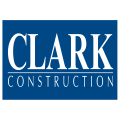
Clark Construction Group, LIMITED LIABILITY COMPANY

Balfour Beatty US

Tutor Perini Corporation
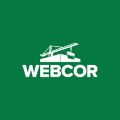
Webcor Builders
 Hensel Phelps Construction Company
Hensel Phelps Construction Company
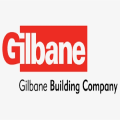
Gilbane Building Company

Sundt Construction, Incorporated

Walsh Canada

Trotter & Morton Group of Companies

Stuart Olson Industrial Group

Graham Infrastructure Limited Partnership
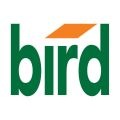
Bird Heavy Civil Limited

Maple Reinders Constructors Limited
